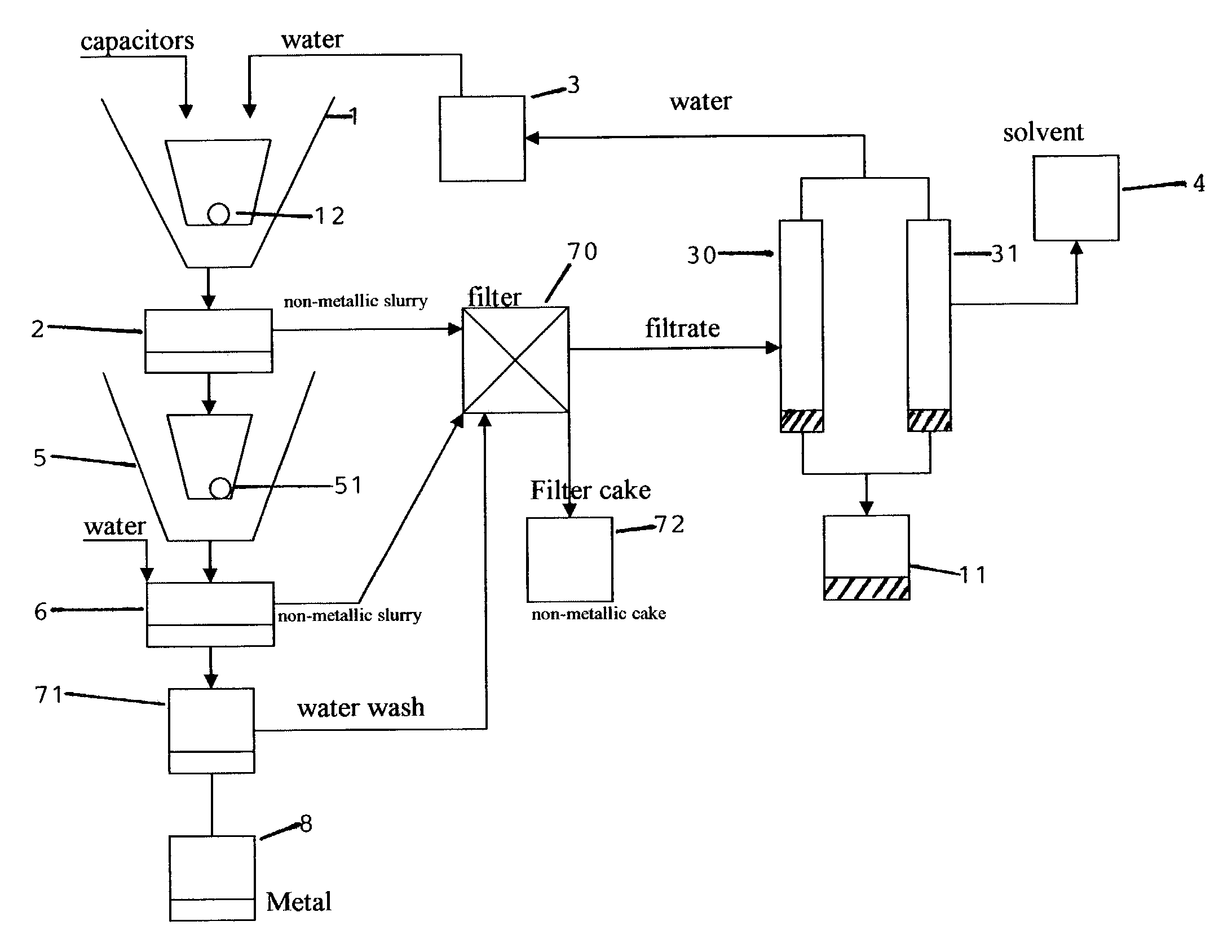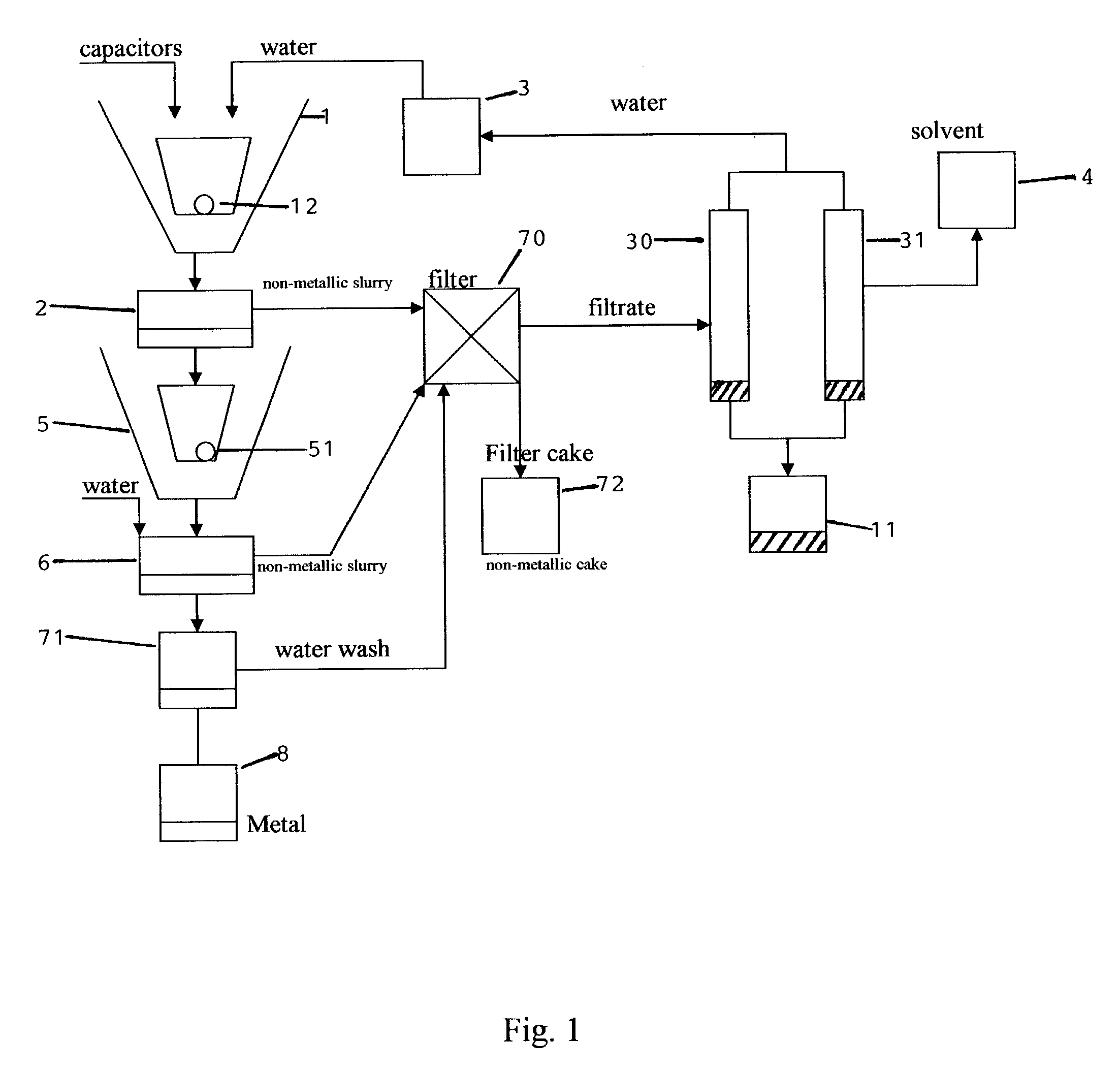Capacitor electrolyte recovery
a technology of capacitor electrolyte and electrolyte, which is applied in the direction of moving filter element filter, filtration separation, separation process, etc., can solve the problems of flammability or explosive, hazardous handling of electrolyte components, potential environmental threat, etc., and achieves convenient operation, convenient operation, and convenient operation.
- Summary
- Abstract
- Description
- Claims
- Application Information
AI Technical Summary
Benefits of technology
Problems solved by technology
Method used
Image
Examples
Embodiment Construction
[0030]Referring to FIG. 1 there is illustrated a process flow diagram of an embodiment of the present invention, which provides for the recovery and reuse of environmentally damaging materials especially of a stable aprotic polar solvent particularly nitrites such as acetonitrile and / or alkyl carbonates and an organic electrolyte solute including quaternary ammonium salts and specifically tetraethylammonium tetrafluoroborate which form integral parts of the electrolyte combination useful in the production of super capacitors (double layer capacitors). The structure of the high performance double layer or super capacitors comprises two layers (an anode foil and a cathode foil) of carbon coated aluminum as the cathode wound about another aluminum foil having an oxide film on one surface facing the cathode through a separator positioned between the anode and cathode foils. The separator is impregnated with the electrolyte combination referred to above, and all the components encased in...
PUM
| Property | Measurement | Unit |
|---|---|---|
| Percent by mass | aaaaa | aaaaa |
| Percent by mass | aaaaa | aaaaa |
| Dielectric polarization enthalpy | aaaaa | aaaaa |
Abstract
Description
Claims
Application Information
 Login to View More
Login to View More - R&D
- Intellectual Property
- Life Sciences
- Materials
- Tech Scout
- Unparalleled Data Quality
- Higher Quality Content
- 60% Fewer Hallucinations
Browse by: Latest US Patents, China's latest patents, Technical Efficacy Thesaurus, Application Domain, Technology Topic, Popular Technical Reports.
© 2025 PatSnap. All rights reserved.Legal|Privacy policy|Modern Slavery Act Transparency Statement|Sitemap|About US| Contact US: help@patsnap.com


